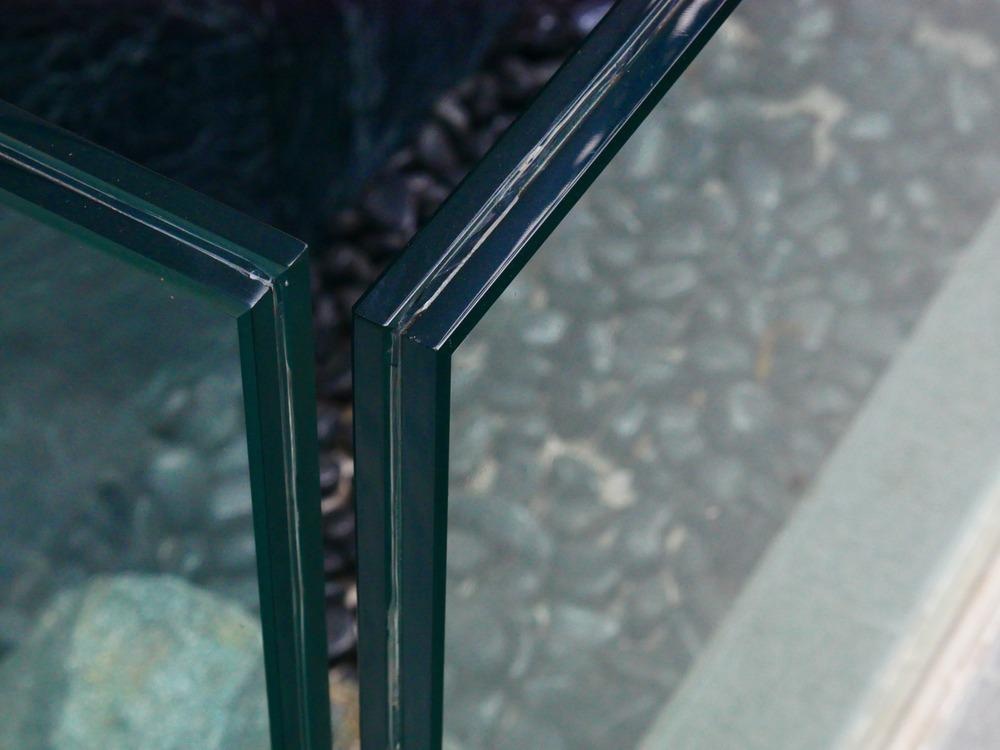Glass is a non-crystalline amorphous solid that is often transparent; it has wide applications in construction. This article examines some of the different types of glass used for construction.

Image Credit: Vladitto/Shutterstock.com
Glazing material is typically made from soda-lime sheet glass. This is floated or rolled into sheets, then cut to size by scoring and snapping or laser cutting with diamond-tipped cutting tools or with water jets.
Glass can be strengthened with thermal or chemical tampering, and it can be bent and curved while it is being heated. Some manufacturers add surface coatings for specific functions like scratch resistance or UV light blocking.
Structural glazing is ubiquitous now and is a key aesthetic element behind modern architecture. Around the world, skylines in modern cities are dominated by large, glass-faced skyscrapers. Stainless steel fittings are countersunk into recesses in the glass panels to create the modern skyscraper look.
Glass used for construction contains a mixture of raw materials: silica, sodium potassium carbonate, lime, lead oxide, and manganese oxide.
In construction, different types of glass perform different tasks or functions. Below is an alphabetical list of the main types of glass used for construction.
Chromatic Glass
Chromatic glass is used whenever interiors need protection from sunlight. ICUs, meeting rooms, and airports use this type of glass to keep building occupants safe from glare.
Chromatic glass can be produced with electric lamination methods, making electrochromic glass. Thermochromic glass is made with heat-sensitive lamination, and photochromic glass is made with light-sensitive lamination.
Energy-Efficient Glass
Energy-efficient glass types have been developed to help buildings keep energy costs down, especially in cooler climates. This type is made by adding a thin coating to one side of a sheet of float glass.
The coating allows energy from the sun – light and heat – to pass through the glass panels in only one direction. This means windows can act as radiators when the sun is shining on them, and they lose less heat in the shade.
Float Glass
Float glass or soda lime glass is the main type of glass panel used in construction; most other glass types are made by adding coatings to float glass panels or modifying the standard float glass composition or method.
Float glass is made with calcium silicate and sodium silicate. The name comes from the production process: molten glass is poured onto a bed of molten tin, where it floats.
The liquids repel one another so that the floating glass spreads to cover the level surface on top of the melted metal. When the glass cools, it sets hard without bonding to the tin. Then, it can be removed and processed.
Float glass can be made in thicknesses ranging between 2 mm and 20 mm, and generally weighs between 6 kg and 36 kg / m2. Untreated float glass can be cut with hand glass cutting tools easily.

Image Credit: Davinsi/Shutterstock.com
Glass Blocks
Glass blocks are made out of two halves pressed together while the connecting sides are still molten, leaving a hollow center. They are used in decorative applications to allow light through while obscuring a view, such as in bathrooms and street-level windows.
Insulated Glazing
Insulated glazing provides extra thermal insulation by trapping layers of air between panes of glass. Double glazing is the most widely used type, but triple glazing units are becoming more common with growing concerns over energy efficiency in buildings.
Laminated Glass
Laminated glass is made with multiple layers of glass stacked together with a transparent, flexible bonding material tying the layers together.
It is usually resistant to UV and is soundproof, and is used for tough applications like glass canopies and walkways.
Shatterproof Glass
Shatterproof glass is made with plastic polyvinyl butyral resin that stops it from forming into sharp pieces if it breaks.
Sheet Or Flat Glass
Sheet glass is less strong than float glass but cheaper and faster to produce. It is made by passing molten glass through a roller to create a relatively flat finish.
Sheet glass is only suitable for greenhouses or decorative applications due to its reduced strength.
Tinted Glass
Glass tinting is achieved by adding one of many coloring agents to the silica mixture to color the final glass. Iron oxide, for example, makes a green coloring, while sulfur makes glass look blue.
Toughened Glass
Toughened glass or tempered glass is used throughout the construction industry. It is tempered to make it less likely to break. If it does break, it breaks into small pieces with rounded edges. Toughened glass is generally also shatterproof.
It is used in any setting where there is a risk of breaking the panel, such as shower screens, guard rails, and kitchens.
Wired Glass
Wired glass is toughened glass with a wire mesh embedded inside the glass. This works to keep the glass panel in place in the event of a break or a crack.
More from AZoBuild: A to Z of Insulation Materials
References and Further Reading
Savage, P. (2017). The Rise of Glass Buildings. [Online] Glass Times. Available at: https://glasstimes.co.uk/featured-articles/the-rise-of-glass-buildings/
Ten Types of Glasses: Engineering Properties, and Applications in Construction. [Online] The Constructor. Available at: https://theconstructor.org/building/types-glass-properties-applications-construction/14755/
Disclaimer: The views expressed here are those of the author expressed in their private capacity and do not necessarily represent the views of AZoM.com Limited T/A AZoNetwork the owner and operator of this website. This disclaimer forms part of the Terms and conditions of use of this website.